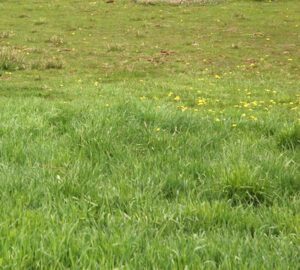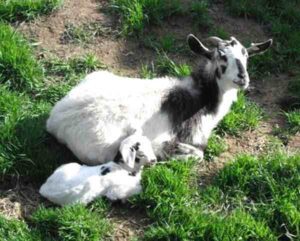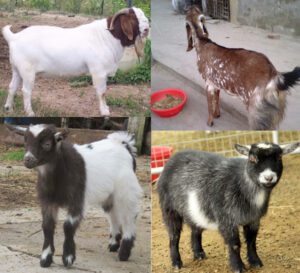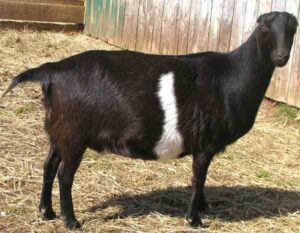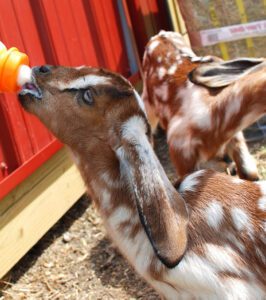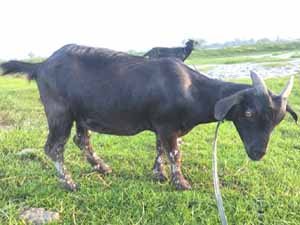The Pygora goat is a beautiful breed of domestic goat developed from crossing the registered Pygmy goat and the white Angora goat. It was developed in the United States and raised mainly for fiber production.
Pygora goat was a result of purposeful cross. And it was bred by Katharine Jorgensen of Oregon City, Oregon in the 1980s. Katharine Jorgensen wanted to develop a small goat which could produce fine fiber for hand spinning.
Pygora goats produce three distinct types of fleece, and they are fiber goats along with the Angora goat and the Cashmere goat. The Pygora Breeders Association was formed in the United States in 1987. And the association has been registering and promoting Pygora goat since then.
First generation of Pygmy and Angora crosses are not considered true Pygoras, these may be bred with other Pygora goats. Or back to pure Pygmy or Angora goats for producing true Pygora goats.
This may be continued while maintaining the integrity of the breed as long as they have no more than 75% Pygmy or Angora ancestry. Sometimes the Pygora goat is also called the Miniature Angora goats.
The breed is noted for their hardiness and playfulness, and gaining popularity rapidly throughout the world. Along with fiber production, the Pygora goat is also gaining popularity as pets. Read more information below.
Pygora Goat Characteristics
Pygora goat is a small sized animal. It comes in a variety of colors such as black, brown, gray, white or a mix of the colors. It has similarities with the Angora goats, but is smaller in size.
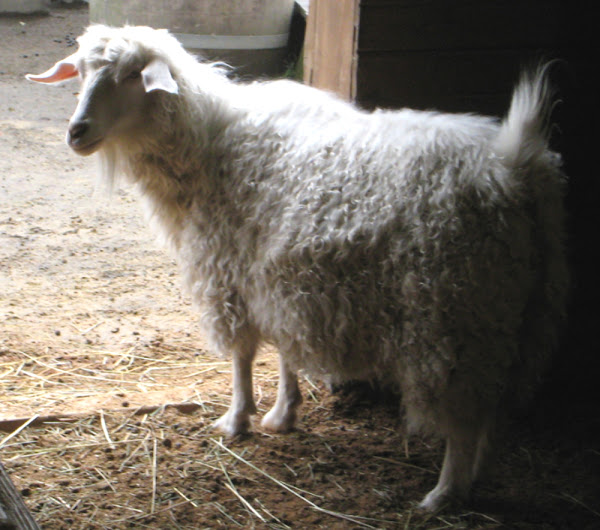
Average height of the Pygora buck is about 23 inches, and the height of the does is about 18 inches. The bucks on average weight about 34-43 kg, and the average body weight of the does is about 29-34kg. Photo and info from Wikipedia.
Uses
The Pygora goat is mainly raised for fiber production. It can also be used as a dairy animal, producing about one liter of milk per day. Nowadays, the Pygora goats are also being raised as pets.
Special Considerations
Pygora goats are very alert, friendly and curious in nature. They are very easy to handle. They have the spunk and playfulness of Pygmy goats with the docile nature of Angora goats.
Pygora goats produce three kids of fleece: cashmere-like fleece, mohair-like fleece or a combination of the two fleeces. The cashmere-like fleece is classified as type C, mohair-like fleece is classified as type A, and the combination of these two fleeces is classified as type B. A and B type fleece are harvested by shearing. And the type C cashmere fleece is harvested by brushing.
The Pygora does usually give birth to one or four kids per kidding. But most common is usually twins. While raising goats as pets, the average lifespan of Pygora goat is about 12 to 15 years. Review full breed profile of this breed in the following table.
| Breed Name | Pygora |
| Other Name | Also known as Miniature Angora goat. |
| Breed Purpose | Fiber, Milk |
| Breed Size | Small |
| Buck | About 34-43 kg |
| Doe | About 29-34 kg |
| Horns | Usually hornless |
| Climate Tolerance | All Climates |
| Coat Color | Many |
| Good for Stall Fed | No |
| Rarity | Common |
| Country/Place of Origin | United States |

